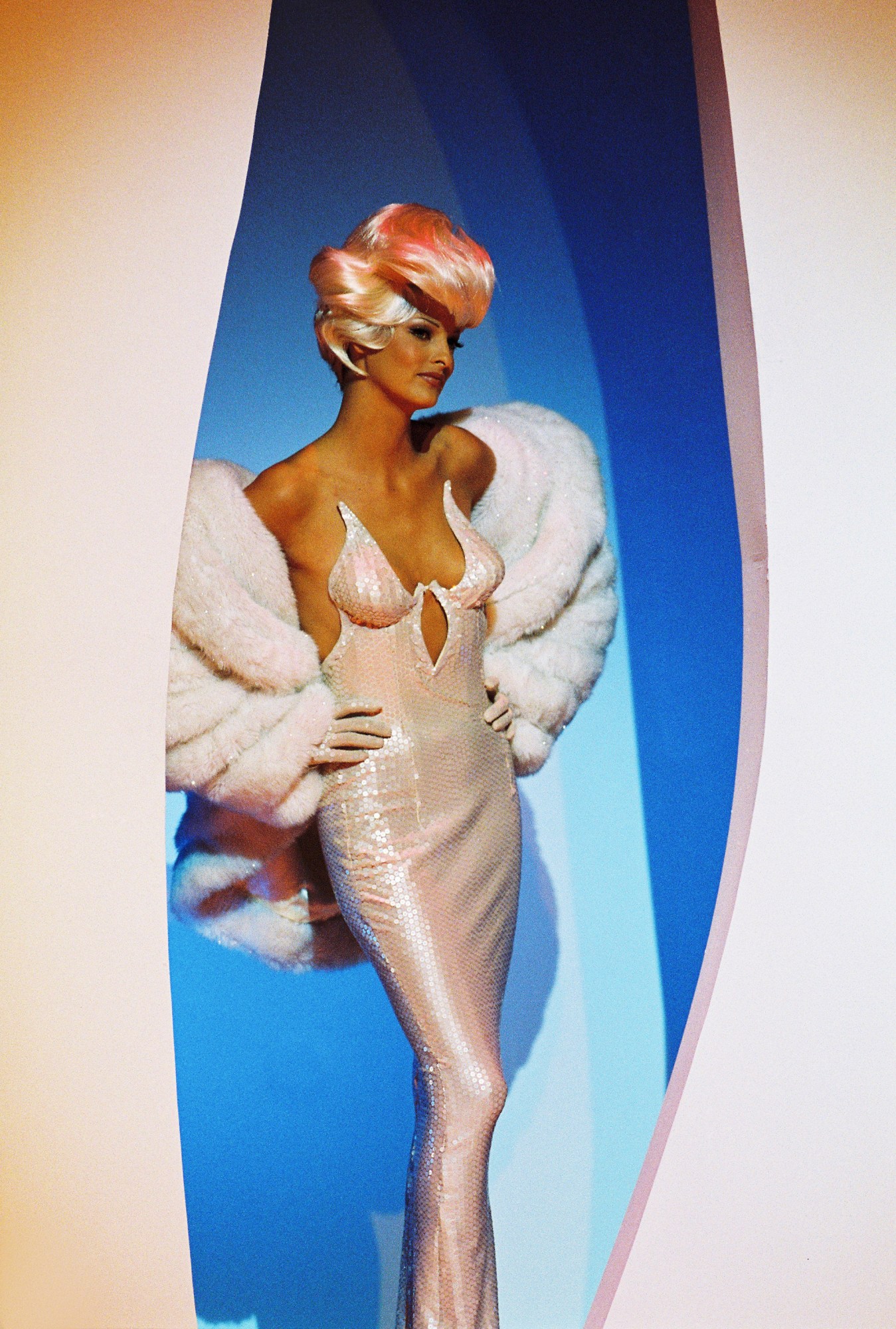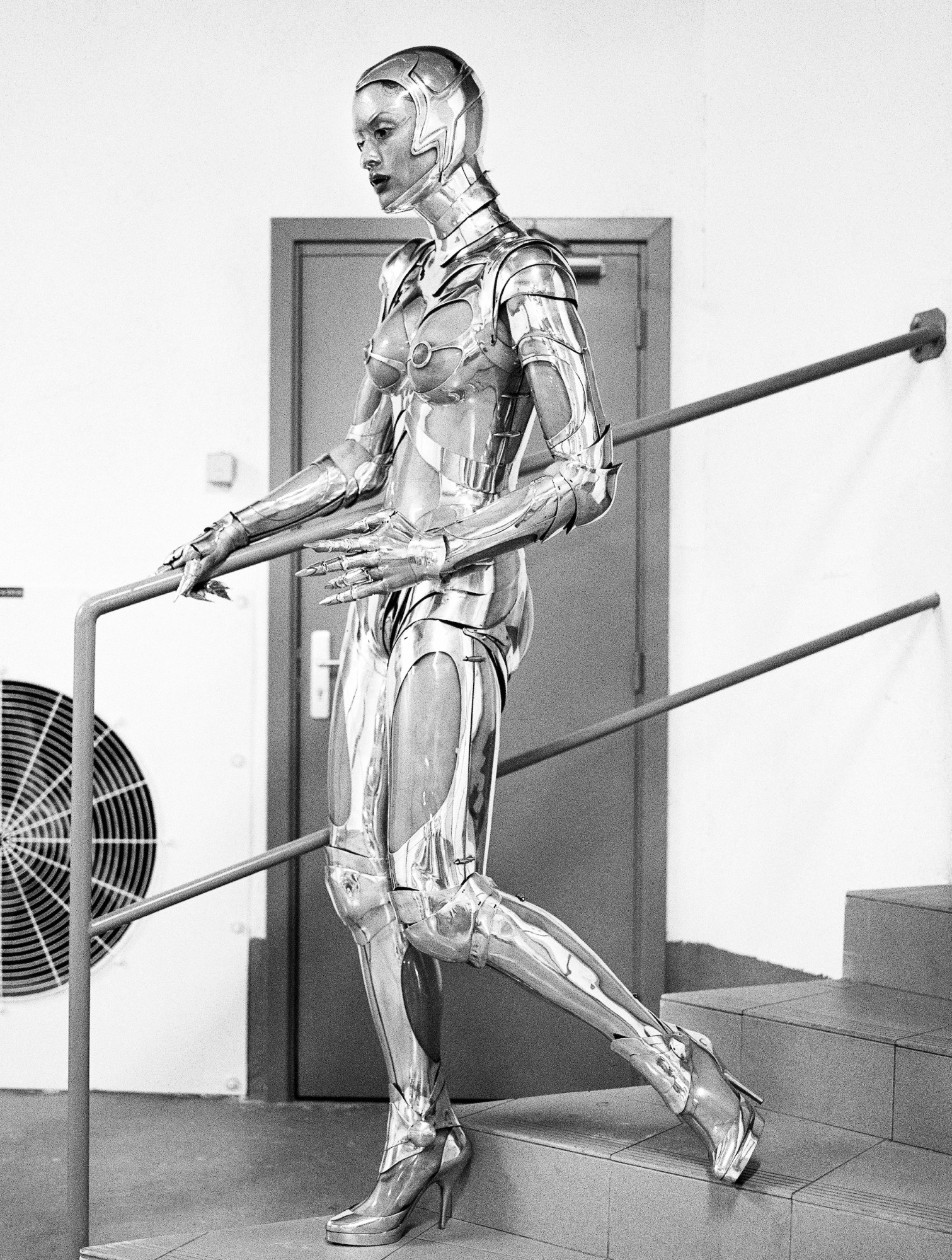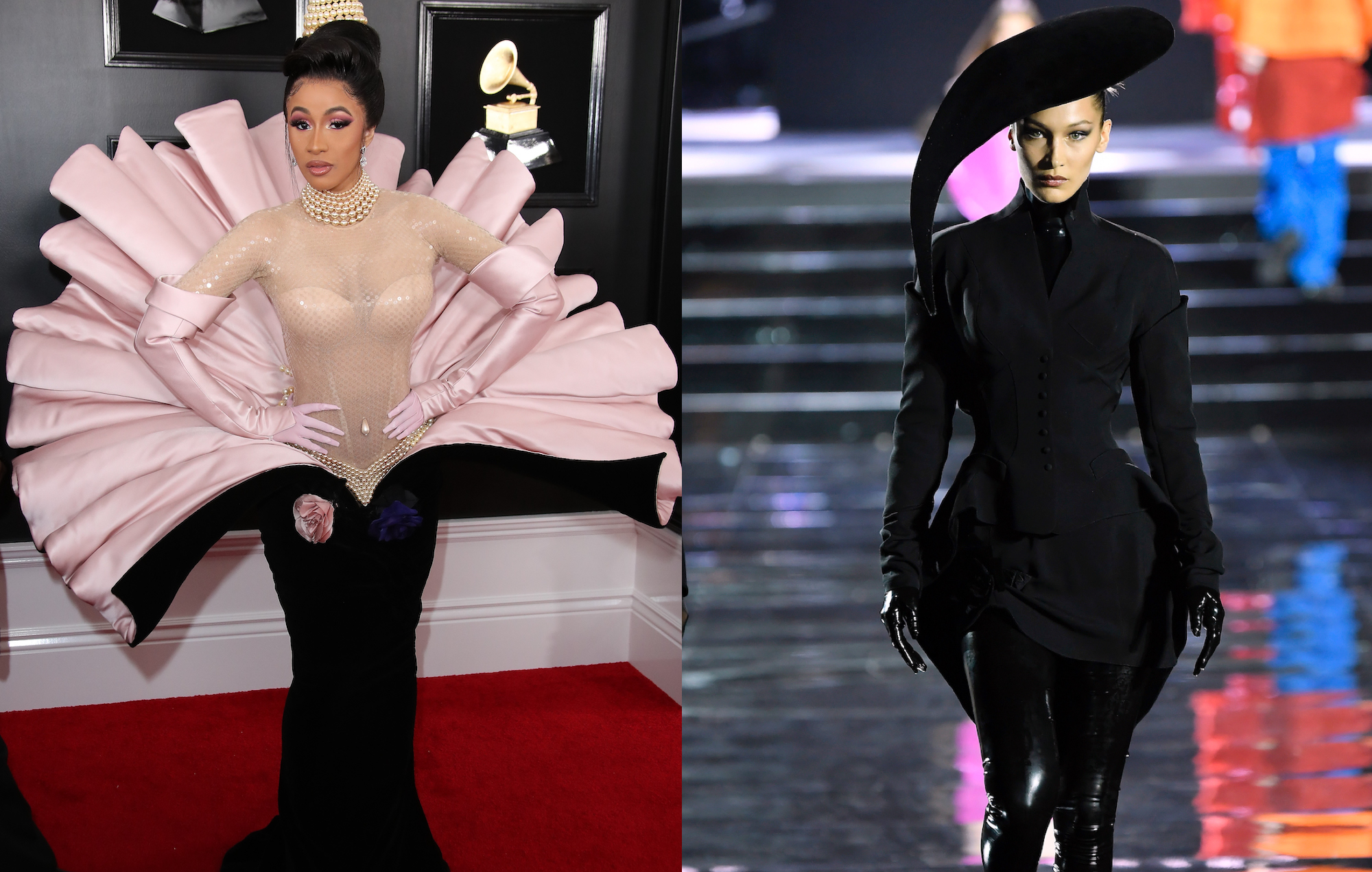These days, anyone who is anyone is wearing Thierry Mugler. Kim Kardashian’s Instagram feed is littered with homages to archival looks and stars from Rihanna and Nicole Kidman to Lady Gaga and Beyoncé have donned the French house in music videos and on the red carpet. Most recently, Bella Hadid donned an all-black ensemble down the catwalk at the CR Runway x LUISAVIAROMA fashion show in Florence in June. Thierry Mugler, whose extravagant designs first revolutionized a fashion market dominated by androgynous minimalism in the 1980s and 1990s, has perhaps never commandeered the industry as much as today.
Mugler’s resurgence onto the fashion scene can almost single-handedly be attributed to Cardi B and the monumental peacock gown she wore to the 2019 Grammys in February (she also sported two other Mugler looks that night). The Swarovski crystal-embroidered crinoline sheath gown was inspired by Botticelli’s “Birth of Venus” and originally modeled by Mugler muse Simonetta Gianfelice at the 1995 Fall Couture Collection in the Cirque d’Hiver exhibition hall in Paris. Now, it is on display at the “Thierry Mugler: Couturissime” exhibition at the Montreal Museum of Fine Arts — the first solo exhibition dedicated to the French designer’s irreverent, iconoclastic, industry-changing career that opened earlier this year.

Mugler’s collaboration with Cardi B marked the second time in 25 years that the Paris house opened its archives to dress a celebrity (the first was in 2009 for Beyoncé’s “I Am…” tour). To prove he doesn’t readily open up his archives to just anyone, he also turned down numerous invitations for retrospectives at institutions across the world before finally agreeing to work with the Montreal Museum of Fine Arts on the premise that the show not be treated like a chronological retrospective of his work, but like a singular celebration of how his designs continue to shape the fashion industry. And that they do.
Mugler was born in Strasbourg, France, in 1948. He took up professional ballet training at the age of 14, an experience that deeply informed his penchant for performativity and spectacle in design. After years of freelance work and one collection under his own label, “Café de Paris,” Mugler finally opened up his first boutique at the Places des Victoires in 1978. Mugler’s sculptural designs quickly became sensations modeled on dramatically orchestrated catwalks by the likes of legends like Naomi Campbell and Eva Herzigova. After decades of pushing boundaries in the industry with his prêt-à-porter and haute couture, Mugler retired from fashion in 2002.

Now, Mugler, at times controversial and always spectacular, is once again responsible from some of the most recent jaw-dropping celebrity looks. He is behind the custom water droplet dress Kim Kardashian wore to the Met Gala in May, the same dress for which she had to squeeze into a corset that reportedly left indentation marks on her back and stomach. Kim also made headlines in the bondage-inspired black Mugler dress from 1998 she wore to the Hollywood Beauty Awards in New York in February, particularly after she sounded off on Twitter when fast-fashion retailer, Fashion Nova, released a similar dress with cut-outs resembling harnesses and thigh high slits shortly after.
But what about the designer’s waist-cinching latex dresses and knife-sharp silhouettes are making him have a particular moment now? Is it the way he seamlessly mingles Hollywood glamour with science fiction and phantasmagorical fantasies? Are we obsessed with his liberal use of fetishistic latex? The way he subverts symbols of female oppression, like the corset, into emblems of control and power?
The works of the notorious designer, who now prefers to be called Manfred Thierry Mugler, operate somewhere between fantasy and myth, transforming the wearers into futuristic femme fatales, goddesses, and exotic creatures that are, as the Montreal Museum of Fine Art’s Chief Curator Nathalie Bondil put it, “subjects, rather than objects, of their sexuality.”

“Metamorphoses, superheroines and cyborgs inhabit the work of this designer who perceived early on, and with considerable humour, the coming transhumanist revolutions,” Bondil said.
More than 150 of these otherwordly designs, which were produced between 1977 and 2014, are featured in “Thierry Mugler: Couturissime.” Most of them have been restored and are being exhibited for the first time, alongside accessories, costumes, and the multiple videos and film clips he worked on off the runway — most notably, George Michael’s 1992 video, “Too Funky,” from which the Harley Davidson corset originally featured on Emma Sjöberg will be on view.
The last room of the exhibition, titled “Couture Future,” features garments made exclusively for the exhibition. “There is no future without a past, so I hope that this exhibition will inspire in its visitors a new creative future,” Mugler said in a statement.
The long-awaited “Thierry Mugler: Couturissime” will run through September 8 at the Montreal Museum of Fine Arts.

